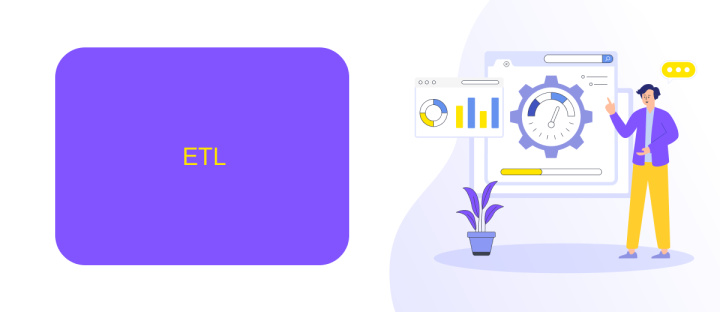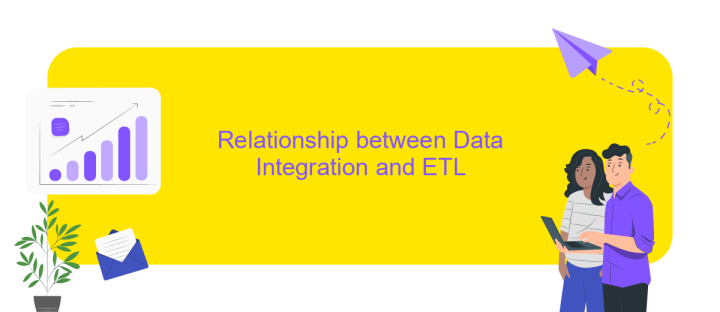Compare Data Integration and ETL. How Are They Related?
Data integration and ETL (Extract, Transform, Load) are fundamental processes in managing and utilizing data within an organization. While both aim to consolidate data from various sources, they differ in their methodologies and applications. This article explores the similarities and differences between data integration and ETL, shedding light on how they complement each other in creating a cohesive data ecosystem.
Data Integration
Data integration is the process of combining data from different sources to provide a unified view. This process is crucial for businesses that rely on diverse data sets to make informed decisions. It involves extracting data from disparate systems, transforming it into a consistent format, and loading it into a single repository for analysis and reporting.
- Combines data from various sources
- Ensures data consistency and accuracy
- Facilitates comprehensive data analysis
- Improves decision-making processes
One effective tool for data integration is ApiX-Drive, which simplifies the process by automating data synchronization between different platforms. With ApiX-Drive, businesses can seamlessly connect applications, ensuring that data flows smoothly without manual intervention. This not only saves time but also minimizes the risk of errors, making it an invaluable asset for any data-driven organization.
ETL

ETL, which stands for Extract, Transform, Load, is a fundamental process in data management and integration. The ETL process involves extracting data from various sources, transforming it into a suitable format or structure for analysis, and then loading it into a data warehouse or other target system. This process is essential for consolidating disparate data sources and ensuring that the data is clean, consistent, and ready for business intelligence and analytics.
One of the key advantages of ETL is its ability to handle large volumes of data from multiple sources efficiently. Tools like ApiX-Drive can automate and streamline the ETL process, reducing the time and effort required for manual data integration. ApiX-Drive offers a user-friendly interface and supports a wide range of data sources, making it easier for organizations to set up and manage their ETL workflows. By leveraging such tools, businesses can ensure that their data integration processes are robust, scalable, and aligned with their analytical needs.
Relationship between Data Integration and ETL

Data Integration and ETL (Extract, Transform, Load) are closely related concepts in the realm of data management. While both aim to consolidate data from various sources, they serve slightly different purposes and processes. Understanding their relationship is crucial for effective data handling and utilization.
- Data Integration: This involves combining data from different sources to provide a unified view. It focuses on the seamless flow of data across systems.
- ETL: ETL is a specific type of data integration that involves extracting data from various sources, transforming it into a suitable format, and loading it into a target database or data warehouse.
- Complementary Roles: Data Integration provides the framework, while ETL executes the necessary steps to move and transform data within that framework.
Services like ApiX-Drive facilitate both data integration and ETL by automating the processes of data extraction, transformation, and loading. They help streamline data workflows, ensuring that data is consistently updated and readily available for analysis. This synergy enhances the efficiency and accuracy of data management strategies.
Benefits of Using Both Data Integration and ETL

Using both Data Integration and ETL (Extract, Transform, Load) processes can significantly enhance the efficiency and accuracy of data management within an organization. While Data Integration focuses on combining data from various sources into a unified view, ETL processes are crucial for extracting data from different systems, transforming it into a suitable format, and loading it into a target database or data warehouse.
One of the primary benefits of combining these two methodologies is the ability to streamline data workflows, ensuring that data is consistently accurate and up-to-date. This synergy can lead to more informed decision-making and improved operational efficiency.
- Enhanced data accuracy and consistency
- Improved decision-making capabilities
- Streamlined data workflows
- Increased operational efficiency
- Scalability in handling large volumes of data
For businesses looking to simplify the integration process, services like ApiX-Drive can be incredibly useful. ApiX-Drive facilitates seamless data integration by providing a platform that connects various applications and automates data transfer, reducing the complexity and time required for manual integration efforts.


Choosing the Right Option for Your Needs
When choosing between data integration and ETL (Extract, Transform, Load) processes, it's essential to assess your specific business needs and objectives. Data integration is ideal for real-time data synchronization between different systems, providing a seamless flow of information. This approach is beneficial for businesses that require up-to-date data across multiple platforms to make informed decisions quickly. On the other hand, ETL processes are more suitable for scenarios where data needs to be extracted from various sources, transformed into a suitable format, and loaded into a data warehouse for comprehensive analysis. This method is particularly advantageous for businesses focused on deep data analytics and historical data trends.
To streamline the integration process, consider utilizing services like ApiX-Drive, which offers a user-friendly platform for connecting various applications and automating data workflows. ApiX-Drive simplifies the setup of integrations without the need for extensive coding knowledge, making it accessible for businesses of all sizes. By leveraging such tools, you can ensure that your data integration or ETL processes are efficient, reliable, and scalable, ultimately supporting your business goals and enhancing operational efficiency.
FAQ
What is the difference between Data Integration and ETL?
How are Data Integration and ETL related?
Can Data Integration exist without ETL?
What are the benefits of using ETL in Data Integration?
How can automation tools help with Data Integration and ETL?
Apix-Drive is a universal tool that will quickly streamline any workflow, freeing you from routine and possible financial losses. Try ApiX-Drive in action and see how useful it is for you personally. In the meantime, when you are setting up connections between systems, think about where you are investing your free time, because now you will have much more of it.

